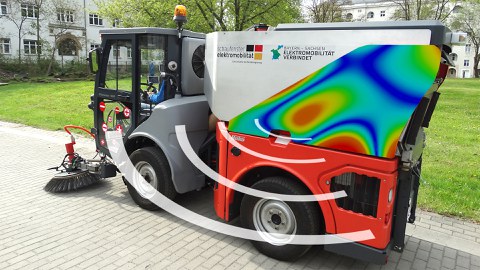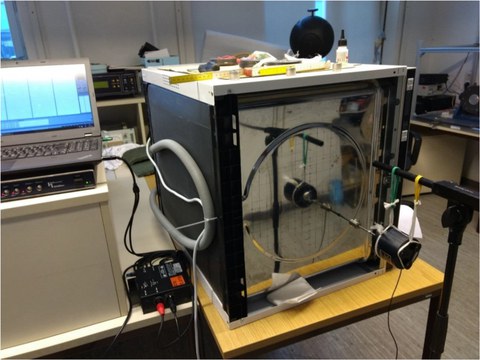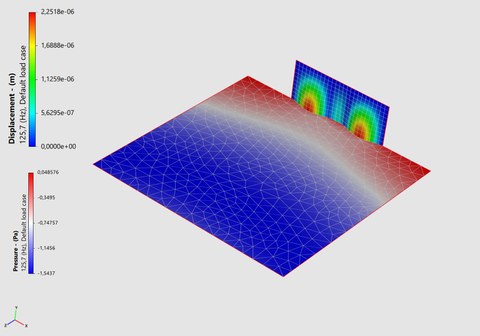Structure-Borne Noise
The theory of structural dynamics describes vibrational phenomena within mechanical structures. This, known as structure-borne sound, elastic deformation of a body is actively used in many applications, such as the vibration alert in a smartphone. Mostly, however, the goal is to suppress structure-borne noise as much as possible. Therefore, for example, entire concert halls are acoustically decoupled from their surroundings.
The field of structural dynamics is interdisciplinary relevant for a variety of problems of building acoustics, machine acoustics, technical acoustics to hearing acoustics. Accordingly, there are a variety of methods and possibilities for acoustic analysis and problem solving.
For acoustic characterization of structures, several measurement methods are applied:
- Modal Analysis
- Operational vibration analysis
- Transfer Path Analysis (TPA)
- Statistical Energy Analysis (SEA)
For the development of solutions and design adaptations, the simulation of structural vibrations and sound radiation has great importance. In the Chair of Acoustics and Haptics, several numerical approaches are utilized for solving vibro-acoustic problems:
- Finite Element Method (FEM)
- Boundary Element Method (BEM)

Equivalent Circuit of a Electro-Mechano-Acoustical Transducer
- Electro Mechanical Networks
- Sound Field Simulation
- Solving nonlinear problems using Finite Difference Methods (FDM)
Example:
The task was the acoustic optimization of a sweeper with focus on the engine noise (engine mounting), brush noise and noise of the suction fan unit.

Sound Radiation of a Sweeper
For this purpose, body and airborne sound measurements at various operating points were obtained (operational vibration analysis) and relevant sound transfer paths were determined (transfer path analysis). The airborne sound radiation could be characterized by a modal analyises and FEM simulations. A large number of optimization recommendations led to a reduction in noise emission. Based on a psychoacoustic analysis of the overall noise, a significant reduction of the perceived annoyance of the sweeper noise could be achieved.
Contact
Mr Mehmet Sait Oezer PhD
Send encrypted email via the SecureMail portal (for TUD external users only).
Professur für Akustik und Haptik
Professur für Akustik und Haptik
Besucheradresse:
Barkhausenbau, BAR 60 Helmholtzstraße 18
01062 Dresden
None


